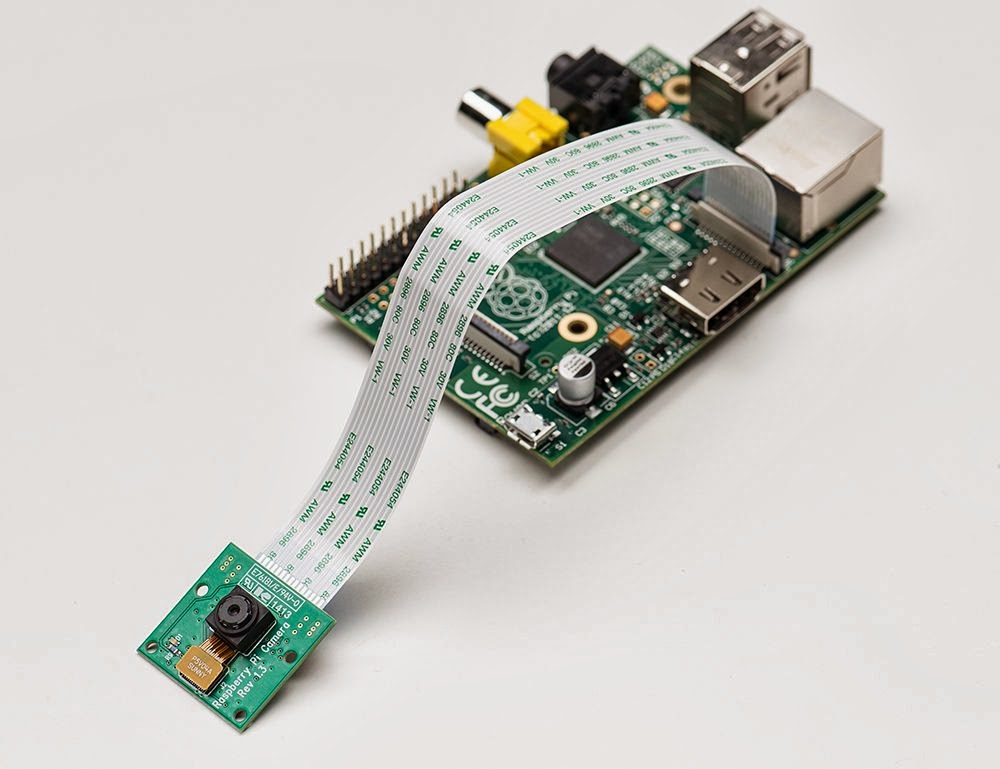The camera board is a small PCB that connects to the CSI-2 camera port on the Raspberry Pi using a short ribbon cable. It provides connectivity for a camera capable of capturing still images or video recordings. The camera connects to the Image System Pipeline (ISP) in the Raspberry Pi's SoC, where the incoming camera data is processed and eventually converted to an image or video on the SD card (or other storage).
The camera module is an Omnivision 5647. It is comparable to cameras used in mobile phones. The camera module is capable of up taking photos up to 5 Mega Pixels (5MP) (2592x1944 pixels) and can record video at resolutions up to 1080p30 (1920x1080x30 fps). The camera module supports raw capturing (Bayer data direct from the sensor) or encoding as JPEG, PNG, GIF and BMP, uncompressed YUV, or uncompressed RGB photos. It can record video as H.264 baseline, main or high profile formats.
There are three command line applications provided for stills, video, and stills output uncompressed. These applications provide the typical features you might find on a compact cameras. eg., Set image size, compression quality, exposure mode, ISO.
The camera board requires 250mA to operate. Make sure you ensure your power supply can provide enough power for the camera module as well as the Raspberry Pi, and any peripherals directly attached to the Raspberry Pi.

No comments:
Post a Comment